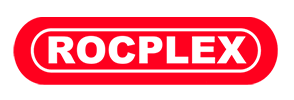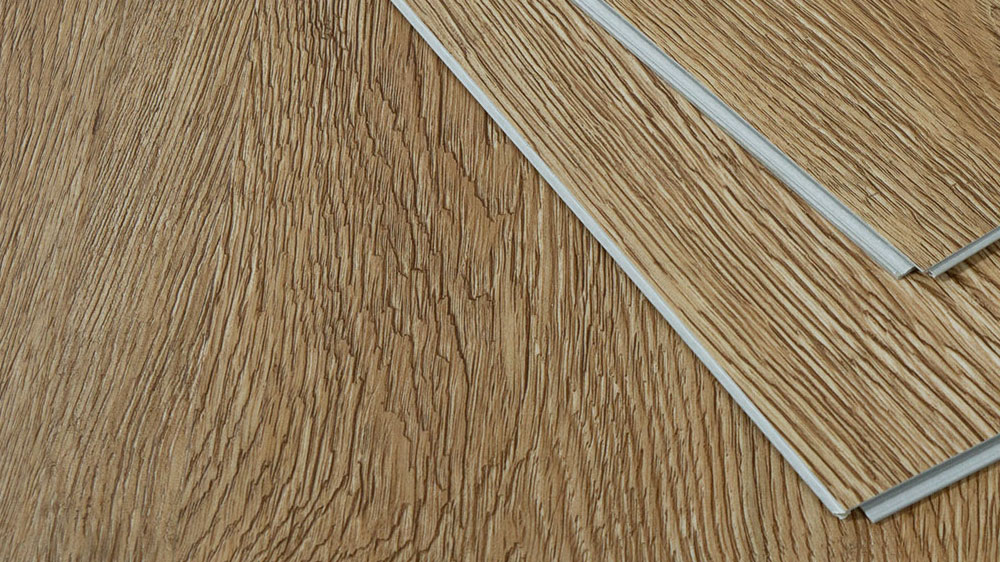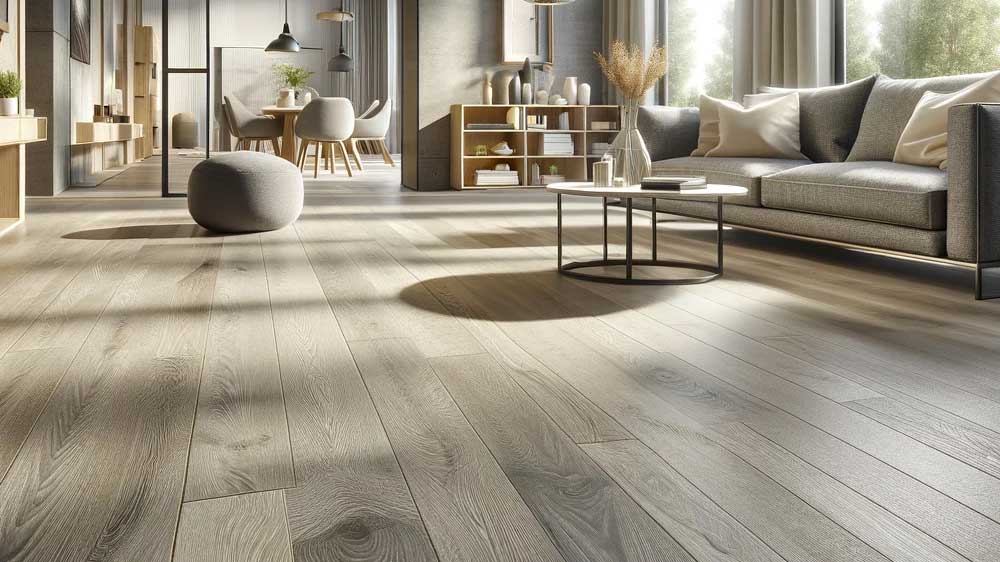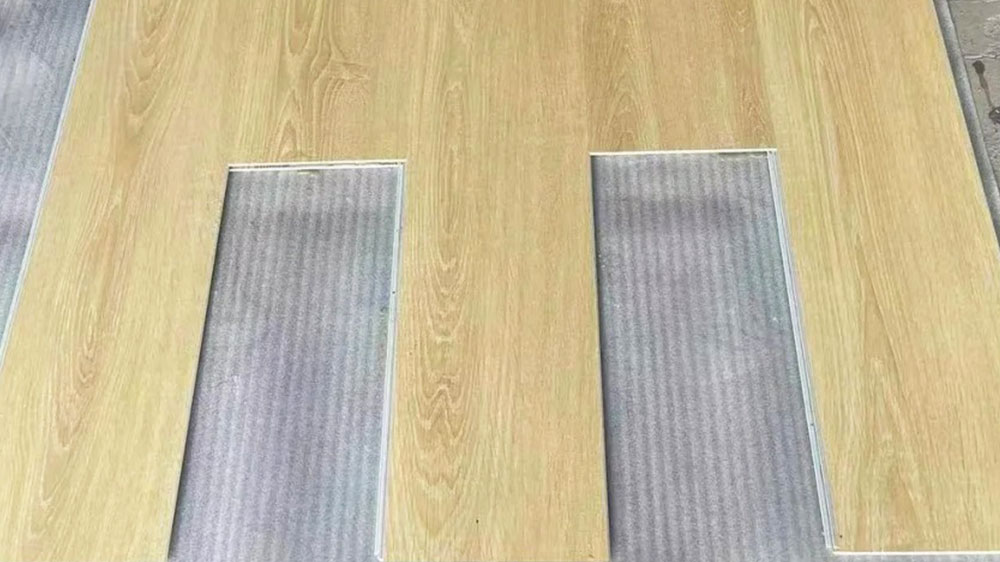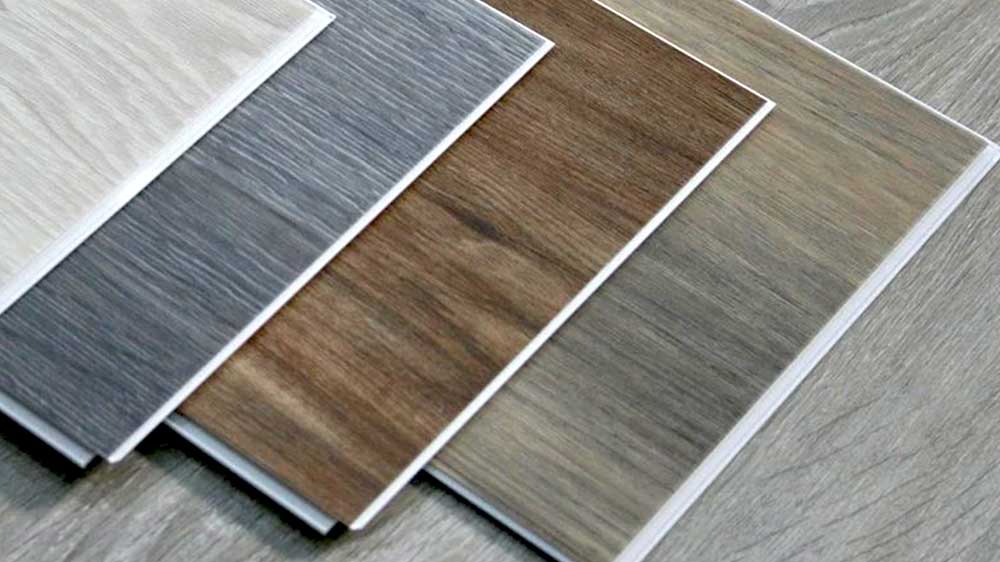What is LVP Flooring?
LVP flooring, short for luxury vinyl plank flooring, is a type of synthetic flooring that has gained popularity for its aesthetic appeal and practical benefits. Designed to mimic the look of natural wood, stone, or ceramic tiles, LVP offers an affordable alternative without compromising on style.
Advantages of LVP Flooring
Durability and Resilience
One of the standout features of LVP flooring is its durability. Constructed with multiple layers, including a wear layer that resists scratches and stains, LVP is an ideal choice for high-traffic areas. It’s also waterproof, making it suitable for spaces like kitchens and bathrooms.
Design Versatility
LVP flooring comes in a wide range of designs, from classic wood looks to contemporary stone or tile appearances. This versatility allows homeowners and designers to create personalized spaces that reflect their style.
Easy Maintenance
Maintaining LVP flooring is a breeze. Regular sweeping and occasional mopping with a mild cleaner are all it takes to keep the floors looking new. The lack of grout lines also means less dirt accumulation, simplifying cleaning even further.
Comfort and Sound Reduction
LVP is softer underfoot compared to traditional hard flooring options, providing a more comfortable walking experience. Additionally, its layered construction can help reduce noise, making it a great choice for apartments and multi-level homes.
LVP Flooring Installation and Sustainability
Installation Ease
One of the appeals of LVP flooring is its ease of installation. Many LVP options come with a click-lock system, allowing for a glueless, floating floor installation that can be done over existing flooring.
Sustainability Considerations
While LVP flooring offers many benefits, it’s important to consider its environmental impact. Some LVP products are made from recycled materials and are recyclable, making them a more sustainable choice. Always check the manufacturer’s sustainability practices before purchasing.
Vinyl Floor Tiles Care and Maintenance
Routine Cleaning
Keeping LVP flooring clean is straightforward. Sweeping or vacuuming regularly to remove dirt and debris, followed by damp mopping with a mild cleaner, will keep the floors looking their best.
Preventing Scratches and Damage
To prevent scratches, use felt pads under furniture legs and avoid dragging heavy objects across the floor. Placing mats at entryways can also help trap dirt and grit that could scratch the surface.
Avoiding Harsh Chemicals
Harsh cleaners and abrasive tools can damage LVP flooring. Always use gentle, pH-neutral cleaners and avoid using steam mops, as the heat and moisture can affect the flooring’s integrity.
Choosing the Right LVP Flooring for Your Space
Consider the Space’s Use
When selecting LVP flooring, consider the space’s function and foot traffic. Opt for thicker planks with a higher wear layer for areas with heavy use, such as living rooms or hallways.
Match Your Style
With the vast array of LVP designs available, choose a style that complements your home’s decor. Whether you prefer a rustic wood look or a sleek, modern tile appearance, there’s an LVP option to suit your taste.
Budget Considerations
LVP flooring ranges in price, so it’s essential to set a budget before shopping. While it’s tempting to go for the cheapest option, investing in higher-quality LVP can provide better durability and a more realistic appearance.
Design Trends in Vinyl Floor Tiles
Natural Wood Looks
One of the most popular trends in LVP flooring is the emulation of natural wood. Advances in printing technology have allowed manufacturers to create vinyl planks that closely resemble various wood species, complete with realistic textures and grain patterns.
Stone and Ceramic Imitations
For those seeking a more contemporary or industrial look, luxury vinyl plank flooring that mimics stone or ceramic tiles is also available. These options offer the aesthetic appeal of natural materials without the higher cost and maintenance requirements.
Bold and Unique Patterns
As homeowners and designers become more adventurous with their flooring choices, LVP manufacturers are responding with bold and unique patterns. Geometric designs, mixed materials, and unconventional color combinations are becoming increasingly popular.
LVP Flooring in Commercial Spaces
Durability for High-Traffic Areas
LVP flooring is an excellent choice for commercial spaces due to its durability and resilience to heavy foot traffic. Its wear layer protects against scratches and scuffs, ensuring the flooring remains attractive over time.
Ease of Maintenance in Busy Environments
In commercial settings, where time and resources for maintenance may be limited, LVP flooring’s easy-to-clean nature is a significant advantage. It requires minimal upkeep, making it ideal for businesses such as restaurants, retail stores, and office buildings.
Design Flexibility for Branding
LVP flooring offers a wide range of design options, allowing businesses to align their flooring with their brand image or aesthetic. Whether it’s a sleek, modern look or a warm, rustic vibe, LVP can help create a cohesive and inviting space.
Comparing LVP Flooring to Other Options
LVP vs. Hardwood
While hardwood flooring offers natural beauty and warmth, it is more susceptible to scratches, moisture damage, and requires more maintenance. LVP, on the other hand, provides a similar aesthetic with greater durability and lower upkeep.
LVP vs. Carpet
Carpet is known for its comfort and sound-dampening properties, but it can be prone to stains and allergens. LVP flooring is a more hygienic option, as it doesn’t harbor dust mites or allergens and is easier to clean.
LVP vs. Ceramic Tile
Ceramic tile is a durable and water-resistant flooring option, but it can be cold underfoot and challenging to install. LVP offers a warmer, more comfortable feel and a simpler installation process, making it a preferred choice for many homeowners.
Installing Vinyl Flooring: Tips and Tricks
Preparing the Subfloor
Before installing luxury vinyl plank flooring, ensure that the subfloor is clean, dry, and level. Any irregularities in the subfloor can affect the appearance and longevity of the flooring.
Acclimating the Flooring
It’s essential to acclimate luxury vinyl plank flooring to the room’s temperature and humidity for at least 48 hours before installation. This helps prevent expansion or contraction of the planks after installation.
Professional Installation vs. DIY
While LVP flooring is known for its ease of installation, professional installation can ensure a flawless finish, especially in complex spaces or large areas. For those who are handy, DIY installation is possible with the right tools and instructions.
Innovations in LVP Flooring Technology
Enhanced Durability Features
Recent advancements in LVP flooring technology have led to even more durable products. New wear layers and coatings have been developed to provide extra protection against scratches, stains, and fading.
Improved Environmental Sustainability
Manufacturers are increasingly focusing on producing vinyl flooring with lower environmental impacts. This includes using recycled materials, reducing emissions during production, and creating products that are more easily recyclable.
Smart Flooring Solutions
Some LVP flooring now comes with integrated technology, such as built-in sensors to monitor temperature and humidity or even antimicrobial properties to ensure a healthier living environment.
As the flooring industry continues to evolve, LVP (Luxury Vinyl Plank) flooring stands out for its remarkable combination of style, durability, and versatility. This innovative flooring solution has become a favored choice for both homeowners and commercial developers, thanks to its ability to offer the luxurious look of hardwood or stone floors without the associated cost and maintenance challenges.
The Role of Vinyl Flooring in Modern Interior Design
Adapting to Various Decor Styles
LVP flooring’s vast range of textures, colors, and patterns allows it to seamlessly integrate into any decor style—from minimalist and contemporary to traditional and rustic. This adaptability makes LVP an ideal choice for creating a cohesive look throughout different rooms and spaces.
Enhancing Aesthetic Appeal with High-Quality Finishes
Modern vinyl flooring options include high-definition printing and embossing techniques that closely mimic natural materials. These advancements have significantly enhanced the aesthetic appeal of LVP, making it almost indistinguishable from real wood or stone flooring.
Supporting Sustainable Design Practices
With growing environmental concerns, LVP flooring is also recognized for its contribution to sustainable design. Many manufacturers now prioritize eco-friendly practices, including the use of recycled materials and more efficient manufacturing processes, aligning with the green building standards.
Navigating the Future of Vinyl Floor Tiles
Innovation in Wear and Performance
The future of LVP flooring is bright, with ongoing innovations aimed at enhancing its wear resistance and overall performance. Developments in wear layer technology and material composition continue to extend the lifespan of LVP, making it an even more economical and durable vinyl flooring option.
Smart Home Integration
As smart home technology becomes increasingly prevalent, vinyl floor is set to play a significant role. Future iterations may include integrated smart features, such as the ability to conduct heat for underfloor heating systems or incorporate sensors to monitor home environments, providing added value beyond aesthetics and durability.
Focus on Health and Wellness
Manufacturers are also focusing on the health and wellness aspects of LVP flooring. Future products may offer enhanced antimicrobial protection and improved indoor air quality features, addressing homeowners’ growing concerns about health and safety within their living spaces.
Choosing the Right Vinyl Floor Tiles: A Buyer’s Guide
Quality over Price
When selecting vinyl floor tiles, it’s crucial to consider quality over price. Opting for high-quality LVP can ensure better durability, appearance, and long-term value, outweighing the initial cost savings of lower-quality options.
Warranty and After-Sales Support
Always check the warranty and after-sales support offered by the manufacturer. A comprehensive warranty can provide peace of mind, while strong after-sales support ensures any issues are promptly addressed.
Sample Comparison
Before making a final decision, compare samples in your home under different lighting conditions. This can help you choose the best match for your interior design and ensure satisfaction with the finished installation.
LVP flooring FAQs
What is LVP flooring?
Luxury Vinyl Plank (LVP) flooring is a versatile and durable flooring option designed to mimic the appearance of natural materials like wood and stone. It offers the aesthetic appeal of these materials along with greater durability, water resistance, and ease of maintenance.
Is LVP better than laminate?
LVP has several advantages over laminate, including better water resistance and a more realistic appearance. While laminate can be more cost-effective and offer similar styles, LVP’s durability and moisture resistance make it a superior choice for areas prone to spills and moisture.
Which is better, LVP or LVT?
The choice between LVP (Luxury Vinyl Plank) and LVT (Luxury Vinyl Tile) largely depends on the desired aesthetic. LVP is designed to mimic hardwood floors, while LVT looks like stone or ceramic tiles. Both offer similar benefits in terms of durability and maintenance.
Is LVP considered cheap?
While LVP is often more affordable than hardwood or stone flooring, it’s not necessarily “cheap” in terms of quality. High-quality LVP offers a luxurious look and feel, along with long-lasting durability, making it a valuable investment for many homeowners.
Why is LVP so expensive?
The cost of LVP flooring can vary widely based on the quality, design, and thickness of the wear layer. Higher-quality LVP, which offers better durability and more realistic designs, generally comes at a higher price due to the advanced technology and materials used in its production.
LVP flooring stands as a testament to innovation and design flexibility in the flooring industry. Its ability to combine aesthetic appeal with practical benefits makes it a cornerstone of modern flooring solutions, promising an ever-evolving range of options to meet the diverse needs and preferences of users worldwide. Whether for residential or commercial applications, LVP flooring offers a sophisticated, durable, and adaptable choice that resonates with contemporary design trends and sustainability goals.
Post time: Apr-22-2024
